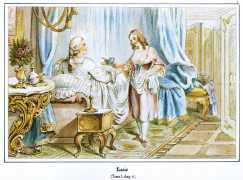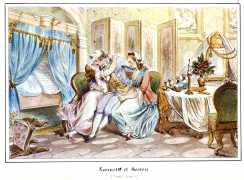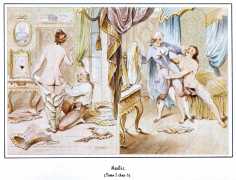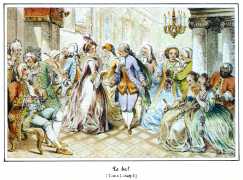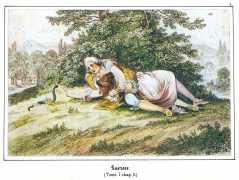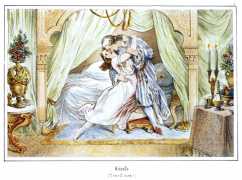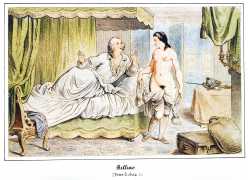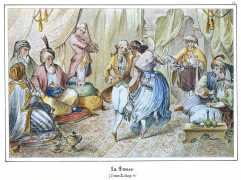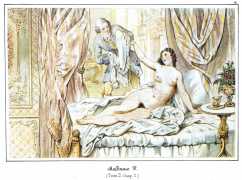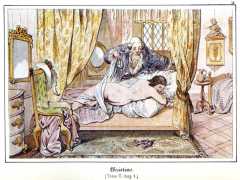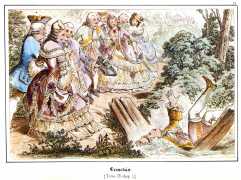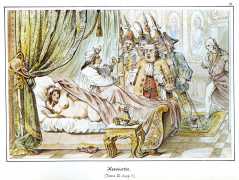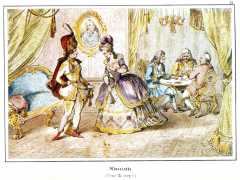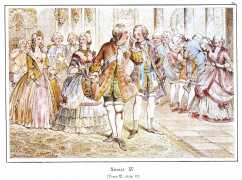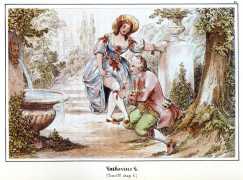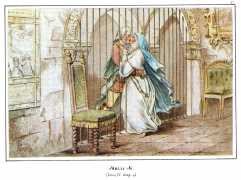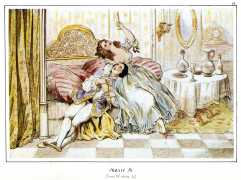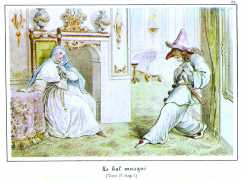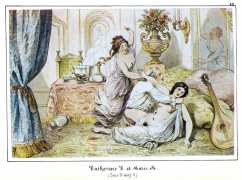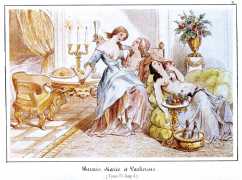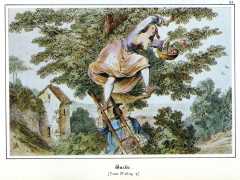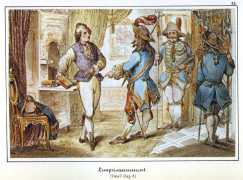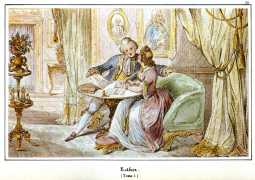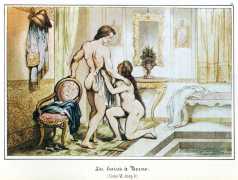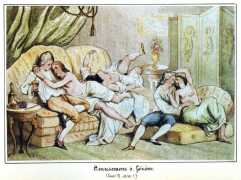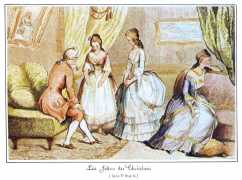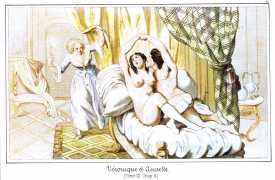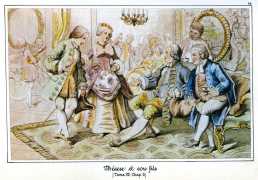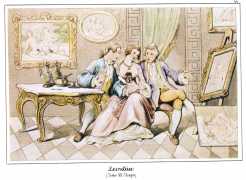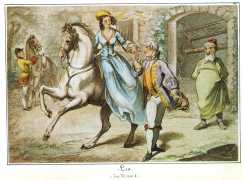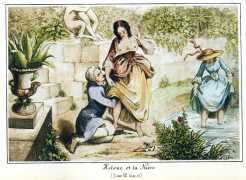
Julius Nisle was probably the most prolific German illustrator working in the mid-nineteenth century, producing sets of drawings for well-known authors including Schiller and Goethe, and latterly Casanova.
Nisle grew up in Stuttgart, where his father was a court musician. Julius attended art school, and in 1833 was employed by the Königlichen Lithographischen Anstalt (Royal Lithographic Institute) in Stuttgart as one of twenty-two lithographers, including Adolf Gnauth, with whom he later ran the Artistische Anstalt von Gnauth und Nisle (Artistic Institute of Gnauth and Nisle).
The artist published his first book illustrations in 1836 when he was twenty-four, for Friedrich Güll's popular children’s song book Kinderheimath in Bildern und Liedern (Children’s Homes in Pictures and Songs). He made his breakthrough in 1837 with twenty-seven illustrations for Johann Peter Hebe’s popular poems; by the time the third edition was published ten thousand copies of the book had been sold. In 1835 the writer and publicist August Lewald founded the magazine Europa, Chronik der Bildungswelt, for which Nisle contributed regular artistic supplements.
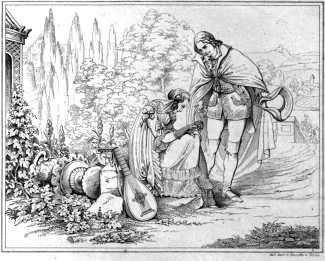
From 1838 Nisle created series of pictures on classical and contemporary literature – poems by Ludwig Uhland, Ferdinand Freiligrath and Nikolaus Lenau, dramas by Friedrich Schiller, works by Johann Wolfgang von Goethe, the writings of Christoph von Schmid, and Sebastian Sailer’s dialect writings. Nisle made the drawings and Adolf Gnauth made many of the plates.
For many years it was assumed that Julius Nisle died in 1850, because that was when he stopped producing new drawings, but recent documentary evidence suggests that it is almost certain that he lived until 1878, outliving his wife Pauline by nine years.
We would like to thank our Russian friend Yuri for suggesting the inclusion of this artist.


